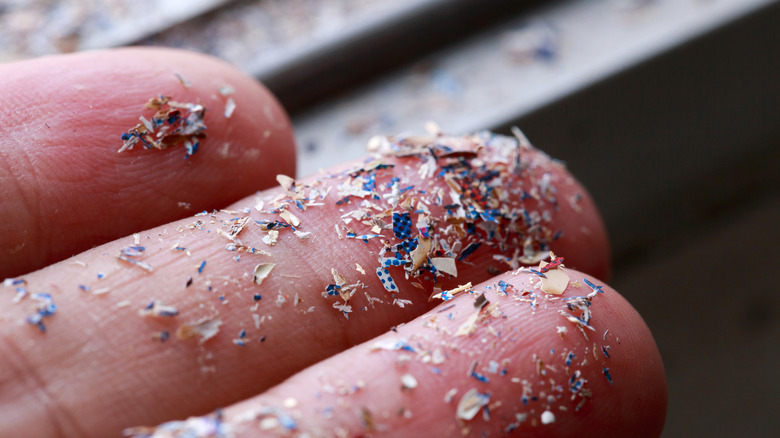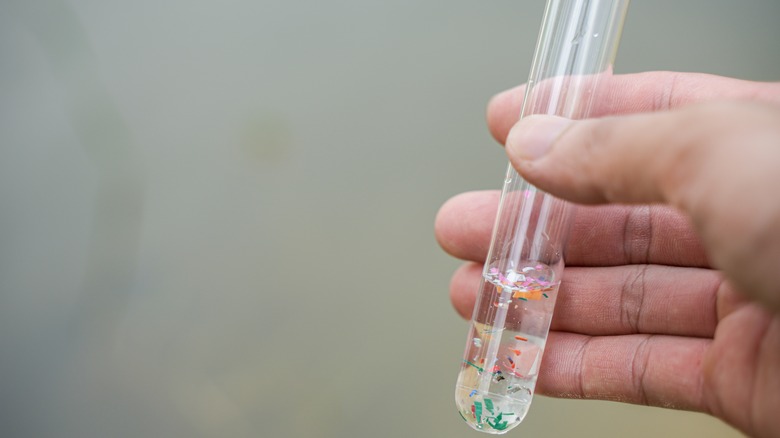The Unexpected Way Microplastics Are Harming Our Oceans And Health
Dangerous, land-based pathogens are using microplastics to hitch a ride out to sea, posing a risk to both humans and wildlife, according to a new study published in the journal Scientific Reports. Researchers from the University of California, Davis set out to examine the connection between microplastics and parasites in seawater and any possible implications they could have on the health of humans and wildlife by studying three different pathogens in the ocean (via UC Davis).
The three pathogens included Toxoplasma gondii, Cryptosporidium (Crypto), and Giardia, all of which can infect both humans and animals. Toxoplasma gondii is a parasite found exclusively in cat feces but can infect other species that come into contact with it, while Crypto and Giardia can cause gastrointestinal disease, which can be fatal in young children and immunocompromised people. The fact that these parasites can harm both humans and animals highlights the importance of taking a "One Health" approach that acknowledges the importance of the environment, Emma Zhang, a fourth-year veterinary student at UC Davis School of Veterinary Medicine and co-author of the study, said in a news release.
Microplastics can help parasites contaminate our food supply
According to the study's findings, parasites can adhere to microplastics, which are plastic particles that are tiny enough to travel long distances and disperse across the ocean (via New Atlas). This means that dangerous pathogens can now reach places that were previously unreachable to them, while those that sink to the bottom of the ocean can be ingested by filter-feeding creatures, like oysters, clams, and mussels. As a result, microplastics can move parasites around the ocean, endangering wildlife and contaminating our food supply. This can pose a risk to human health as well. By consuming contaminated food, humans can also ingest microplastics and pathogens.
In order to reduce the impacts of microplastics in the ocean, we must prevent them from getting into waterways in the first place. According to Chelsea Rochman, a plastic-pollution expert and co-author of the study, we can do this by implementing mitigation strategies, like putting filters on dryers and washing machines and using bioretention cells to treat stormwater (per UC Davis).


